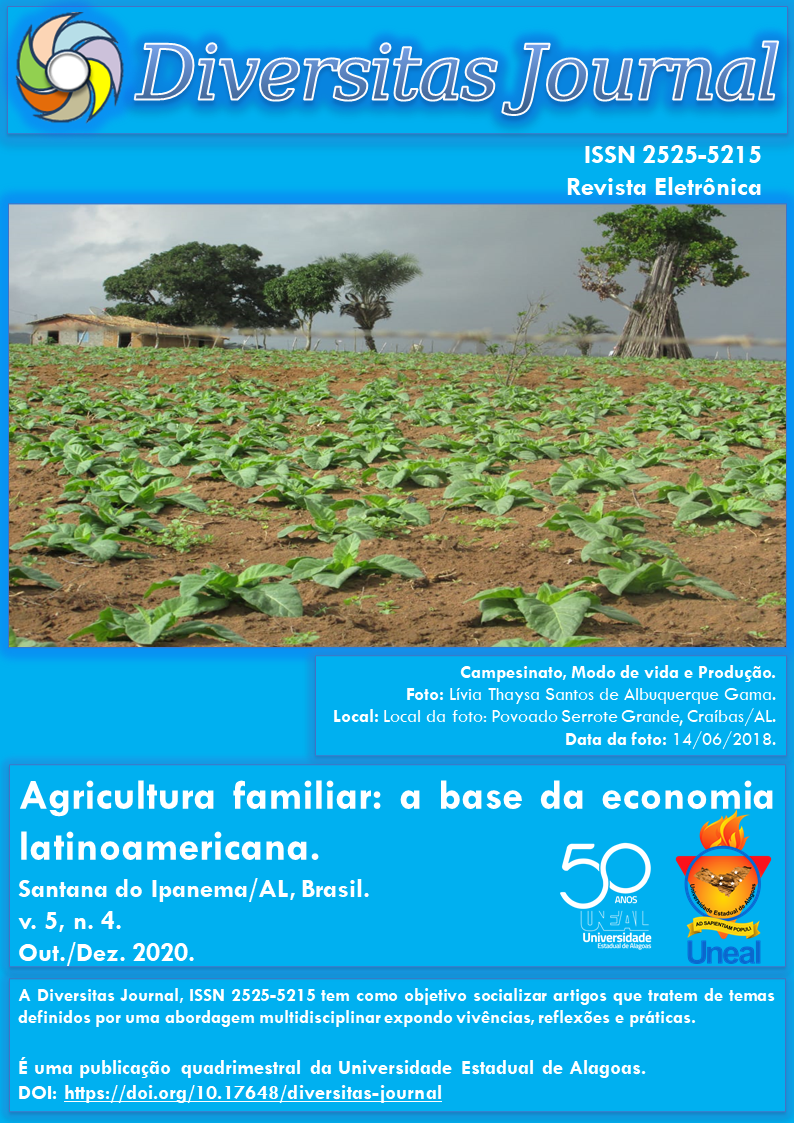Comportamento de Paubrasilia echinata (Lam.) Gagnon, H. C. Lima & G. P. Lewis (pau-brasil) em plantios homogêneos experimentais no Nordeste do Brasil
DOI:
https://doi.org/10.17648/diversitas-journal-v5i4-990Abstract
ABSTRACT: In the 1960s, small experimental plots of native and exotic forest species were installed in various parts of the country, including Paubrasilia echinata, in order to evaluate their behavior under homogeneous planting conditions and years later a large number of these plots were left without maintenance and were abandoned. Thus, the objective of this work was to retrieve silvicultural information about the plantations and to present results of behavior in experimental homogeneous plantations carried out in the coastal zone of the Northeast Region, specifically in the municipalities of Camaragibe-PE, Lagoa de Itaenga-PE, São Lourenço da Mata- PE, Nísia Floresta-RN and Maceió-AL. The trees located in the center of each plantation were measured, and the following variables were collected: circumference at the base (CB), circumference at breast height (CBH) and total height. The volume was estimated using the form factor 0.5. Higher growth was observed in Maceió-AL, with MAI (medium annual increment) estimated 9.396 m³.ha-¹.year-1 with 36 years old, where the site presents higher natural fertility. Lower values of MAI were observed in NísiaFloresta-RN, 1.336 m³.ha-¹.year-1 with 41 years old and Camaragibe-PE, 1.956 m³.ha-¹.year-1 with 24 years old. Although the growth of the species is considered slow, it was observed that the average increment in height and diameter of homogeneous plantings evaluated was higher than the quantified of several species of the Amazon Forest and even of the Atlantic Forest.
KEYWORD: Forest species. Silviculture. Atlantic Forest.
Metrics
Downloads
Published
How to Cite
Issue
Section
License
Copyright (c) 2020 José Augusto da Silva Santana, Juliana Lorensi do Canto, Frans Germain Corneel Pareyn, Mayra Jérsica Soares Gomes Cabral

This work is licensed under a Creative Commons Attribution 4.0 International License.
The Diversitas Journal expresses that the articles are the sole responsibility of the Authors, who are familiar with Brazilian and international legislation.
Articles are peer-reviewed and care should be taken to warn of the possible incidence of plagiarism. However, plagiarism is an indisputable action by the authors.
The violation of copyright is a crime, provided for in article 184 of the Brazilian Penal Code: “Art. 184 Violating copyright and related rights: Penalty - detention, from 3 (three) months to 1 (one) year, or fine. § 1 If the violation consists of total or partial reproduction, for the purpose of direct or indirect profit, by any means or process, of intellectual work, interpretation, performance or phonogram, without the express authorization of the author, the performer, the producer , as the case may be, or whoever represents them: Penalty - imprisonment, from 2 (two) to 4 (four) years, and a fine. ”


















